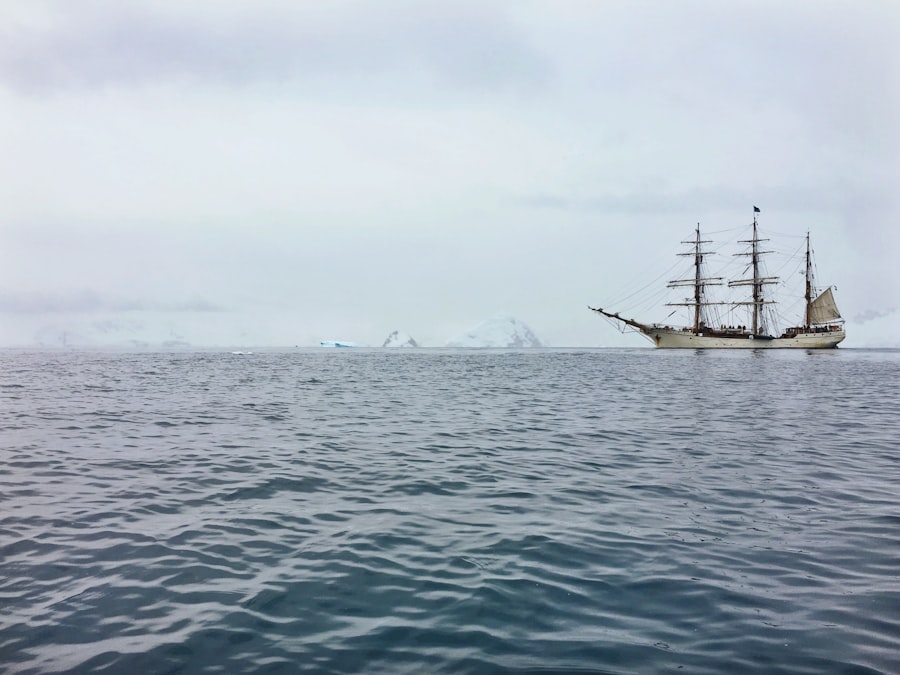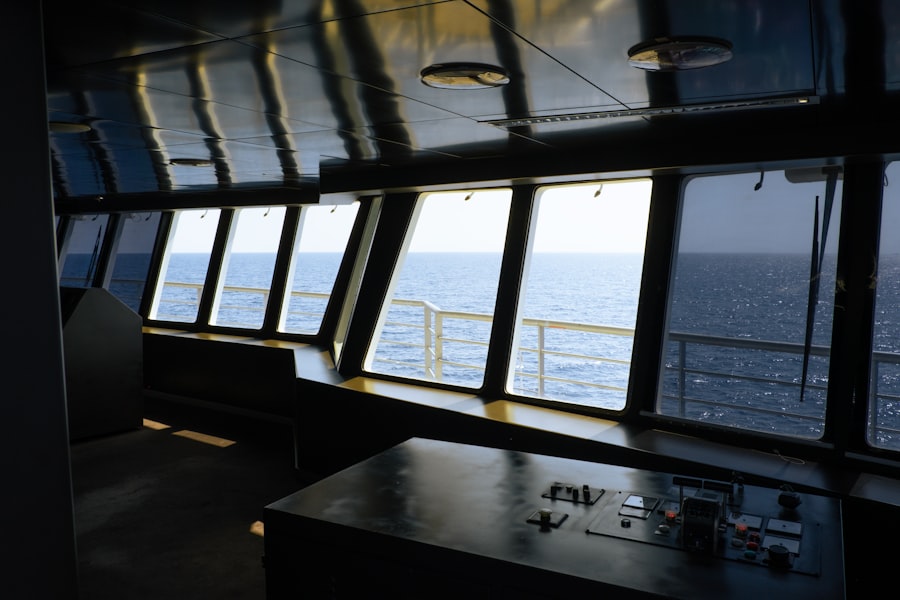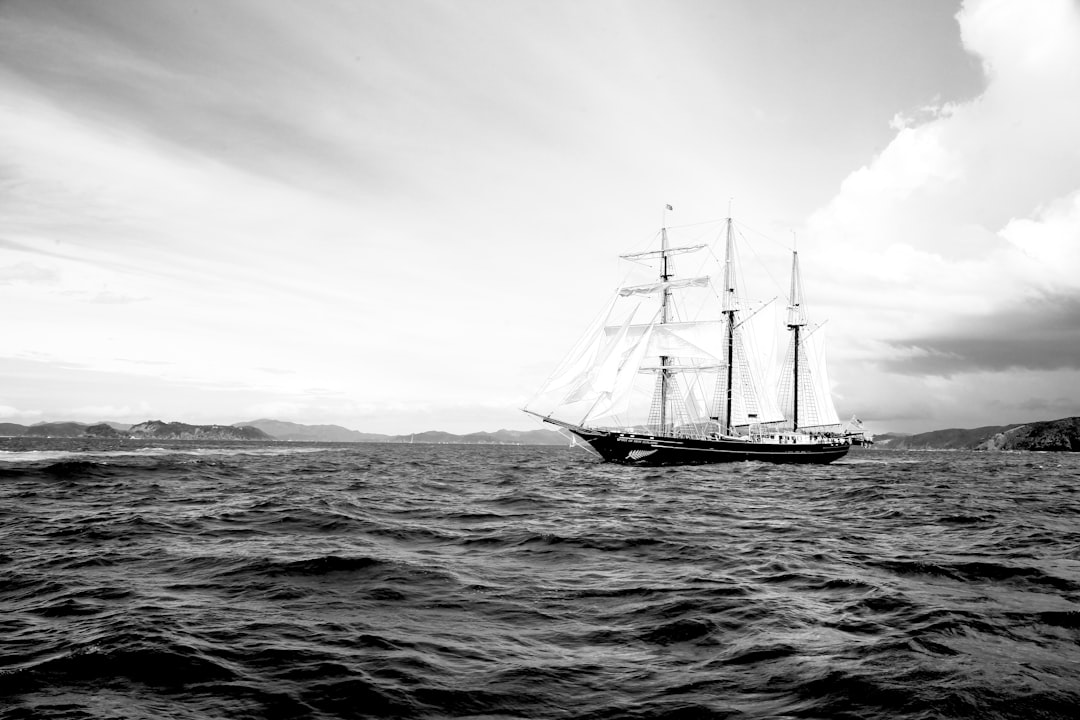The Drake Passage, often referred to as one of the most treacherous maritime routes in the world, serves as the gateway between South America and Antarctica. Stretching approximately 600 kilometers (370 miles) from Cape Horn in Chile to the Antarctic Peninsula, this body of water is notorious for its unpredictable weather patterns and turbulent seas. Sailors and adventurers alike have long regarded the passage with a mix of awe and trepidation, as it is here that the Atlantic and Pacific Oceans converge, creating a unique and often volatile marine environment.
The passage is not merely a geographical feature; it embodies the spirit of exploration and the challenges that come with venturing into the unknown. Navigating the Drake Passage is a rite of passage for many who seek to explore the icy landscapes of Antarctica. The waters are characterized by strong currents, high winds, and waves that can reach staggering heights.
This combination of factors makes the passage a formidable challenge for even the most seasoned mariners. Despite its reputation, the Drake Passage is also a vital route for scientific research and tourism, as it provides access to one of the last great wildernesses on Earth. Those who dare to cross it often emerge with stories of their encounters with nature’s raw power, making it a significant part of their journey to the southernmost continent.
Key Takeaways
- The Drake Passage is a challenging route to Antarctica due to its notorious rough seas and extreme weather conditions.
- Proper ship preparation is crucial for navigating the Drake Passage, including reinforcing the vessel and securing all equipment.
- Experienced captains and crew play a vital role in successfully crossing the Drake Passage, utilizing their expertise to navigate through challenging conditions.
- Advanced navigational technologies and tools are used to safely navigate the Southern Ocean, including GPS, radar, and weather forecasting systems.
- Strategies for minimizing the impact of rough seas and extreme weather conditions include route planning and adjusting sailing speed.
Understanding the Geography and Climate of the Southern Ocean
The Southern Ocean, which encircles Antarctica, is a unique body of water that plays a crucial role in global climate regulation and oceanic circulation. It is defined by its cold temperatures and distinctive currents, including the Antarctic Circumpolar Current, which flows from west to east around the continent. This current is responsible for transporting vast amounts of water and nutrients, influencing marine ecosystems and weather patterns far beyond its borders.
The geography of the Southern Ocean is marked by deep trenches, underwater mountains, and ice shelves that contribute to its complex hydrology. The climate of the Southern Ocean is equally remarkable, characterized by extreme conditions that can shift rapidly. The region experiences long periods of darkness during winter months and continuous daylight in summer, leading to significant variations in temperature and weather patterns.
Storms can develop with little warning, bringing fierce winds and heavy seas that challenge even the most robust vessels. Understanding these geographical and climatic factors is essential for anyone attempting to navigate the Drake Passage, as they directly impact safety and navigation strategies.
The Importance of Proper Ship Preparation for Navigating the Drake Passage

Proper ship preparation is paramount when it comes to navigating the Drake Passage. Vessels must be equipped to handle the harsh conditions that are often encountered in this region. This includes ensuring that ships are structurally sound, with reinforced hulls capable of withstanding heavy seas.
Additionally, all essential equipment must be in optimal working condition, from navigation systems to life-saving gear. A well-prepared ship not only enhances safety but also increases the likelihood of a successful crossing. Beyond physical preparations, there is also a need for thorough planning regarding routes and timing.
Experienced navigators often study weather patterns and ocean currents to determine the best times for crossing. This foresight can make a significant difference in avoiding particularly rough conditions. Furthermore, crew training plays a critical role in ship preparation; crew members must be familiar with emergency protocols and operational procedures to ensure that they can respond effectively to any challenges that may arise during the journey.
The Role of Experienced Captains and Crew in Successfully Crossing the Drake Passage
| Metrics | Experienced Captains | Experienced Crew |
|---|---|---|
| Years of Experience | 10+ | 5+ |
| Training | Captain’s License, Navigation Courses | Marine Safety, Emergency Response |
| Knowledge of Drake Passage | Extensive | Good |
| Decision Making | Experienced in extreme conditions | Quick and efficient problem solving |
| Communication | Clear and effective | Team coordination and cooperation |
The expertise of experienced captains and crew members cannot be overstated when it comes to successfully navigating the Drake Passage. These professionals bring a wealth of knowledge about maritime navigation, weather patterns, and emergency response strategies. Their ability to read the sea and anticipate changes in conditions is crucial for making informed decisions during the crossing.
Moreover, teamwork among crew members is essential for maintaining safety and efficiency on board. Each crew member has specific responsibilities that contribute to the overall operation of the vessel.
From monitoring equipment to managing passenger safety, their roles are interconnected and vital for a successful journey. The synergy between an experienced captain and a well-trained crew can make all the difference in navigating the unpredictable waters of the Drake Passage.
Advanced Navigational Technologies and Tools Used to Navigate the Southern Ocean
In recent years, advancements in navigational technologies have significantly improved safety and efficiency in maritime travel across challenging routes like the Drake Passage. Modern vessels are equipped with sophisticated GPS systems, radar technology, and electronic charting tools that provide real-time data on weather conditions and sea states. These technologies allow navigators to make informed decisions quickly, adapting their routes as necessary to avoid dangerous conditions.
Additionally, satellite communication systems have revolutionized how ships operate in remote areas like the Southern Ocean. These systems enable constant communication with shore-based support teams, allowing for timely updates on weather forecasts and navigational advice. The integration of these advanced tools into maritime operations has not only enhanced safety but has also opened up new possibilities for exploration and research in some of the most remote regions of our planet.
Strategies for Minimizing the Impact of Rough Seas and Extreme Weather Conditions

Navigating through rough seas and extreme weather conditions requires strategic planning and adaptability. One effective strategy is to monitor weather forecasts closely before and during the journey.
Additionally, vessels may employ techniques such as altering speed or heading to minimize the impact of waves and wind on their stability. Another important strategy involves passenger management during rough seas. Crew members are trained to provide guidance on safety protocols, ensuring that passengers are secure in their cabins or designated areas during turbulent conditions.
This proactive approach not only enhances safety but also helps maintain calm among passengers who may be anxious about crossing such challenging waters.
Safety Protocols and Emergency Preparedness for Crossing the Drake Passage
Safety protocols are critical when crossing the Drake Passage, given its reputation for unpredictable conditions. Vessels must have comprehensive emergency plans in place that outline procedures for various scenarios, including medical emergencies, equipment failures, or severe weather events. Regular drills are conducted to ensure that both crew members and passengers are familiar with these protocols, fostering a culture of preparedness on board.
Moreover, safety equipment must be readily accessible and well-maintained. Life jackets, lifeboats, flares, and first aid kits should be checked regularly to ensure they are in working order. In addition to physical safety measures, fostering a sense of awareness among passengers about potential risks can empower them to respond effectively should an emergency arise.
Wildlife Encounters: Observing the Unique Fauna of the Southern Ocean
One of the most captivating aspects of crossing the Drake Passage is the opportunity to observe unique wildlife that inhabits the Southern Ocean. This region is home to an array of marine species, including seals, penguins, whales, and various seabirds. As vessels navigate through these waters, passengers often have the chance to witness these animals in their natural habitats, creating unforgettable memories.
The presence of wildlife adds an element of wonder to the journey across the Drake Passage. Many travelers embark on this adventure not only for the destination but also for the chance to connect with nature in such an extraordinary setting. Observing a pod of orcas or a colony of penguins can evoke a sense of awe and appreciation for the biodiversity that thrives in this remote part of the world.
The Historical Significance of the Drake Passage in Exploration and Discovery
The historical significance of the Drake Passage cannot be overlooked; it has played a pivotal role in exploration and discovery since early maritime expeditions sought new trade routes and territories. Renowned explorers such as Ferdinand Magellan navigated these waters in search of a passage to Asia during the 16th century, marking one of the first European encounters with this challenging route. The passage has since become synonymous with adventure and exploration, drawing countless adventurers eager to follow in these historic footsteps.
Throughout history, many expeditions have ventured into these treacherous waters, contributing to our understanding of geography, oceanography, and climate science. The Drake Passage has served as a gateway not only to Antarctica but also to significant scientific discoveries about our planet’s ecosystems and climate systems. Today, it continues to inspire researchers and explorers alike as they seek to uncover more about this remote region’s mysteries.
Tips for Passengers: How to Prepare for a Journey Across the Drake Passage
For passengers preparing for a journey across the Drake Passage, there are several key tips to ensure a smooth experience. First and foremost, travelers should pack appropriately for varying weather conditions; layers are essential due to rapid temperature changes. Waterproof clothing and sturdy footwear are also recommended for excursions on deck or landings on Antarctic shores.
Additionally, passengers should familiarize themselves with safety protocols provided by crew members during briefings before departure. Understanding emergency procedures can help alleviate anxiety during rough seas. Finally, maintaining an open mind about potential discomforts associated with crossing such challenging waters can enhance overall enjoyment; embracing the adventure spirit is key when embarking on this remarkable journey.
The Future of Navigating the Drake Passage: Innovations and Developments in Antarctic Travel
As interest in Antarctic travel continues to grow, innovations in navigation and vessel design are shaping the future of crossing the Drake Passage. New technologies are being developed to enhance safety and efficiency while minimizing environmental impacts on this fragile ecosystem. For instance, hybrid propulsion systems are being explored as a means to reduce fuel consumption and emissions during voyages.
Furthermore, advancements in research capabilities onboard vessels allow scientists to gather valuable data about ocean health and climate change while facilitating tourism experiences that educate passengers about conservation efforts. As maritime travel evolves in response to both technological advancements and environmental considerations, navigating the Drake Passage will likely become safer and more sustainable than ever before—ensuring that future generations can continue exploring this awe-inspiring region while preserving its natural beauty for years to come.
The Drake Passage is a significant maritime route that connects the Atlantic and Pacific Oceans, situated between the southern tip of South America and Antarctica. It is known for its challenging navigation conditions due to strong winds and currents. Ships, particularly those involved in scientific research and tourism, frequently use this passage to reach the Antarctic Peninsula. For more detailed insights into the challenges and experiences of navigating the Drake Passage, you can explore a related article on the topic by visiting this page.
WATCH NOW! Drake Passage: Earth’s Deadliest Waters Revealed
FAQs
What is the Drake Passage?
The Drake Passage is the body of water between the southern tip of South America and the northern tip of the Antarctic Peninsula. It is known for its rough seas and strong winds.
Do ships use the Drake Passage?
Yes, ships do use the Drake Passage as a route for travel between the Atlantic and Pacific Oceans, as well as for accessing the Antarctic region.
Are there challenges associated with navigating the Drake Passage?
Yes, the Drake Passage is known for its rough seas and strong winds, which can create challenging conditions for ships navigating through the area.
What types of ships use the Drake Passage?
A variety of ships use the Drake Passage, including cargo ships, research vessels, and expedition cruise ships.
Are there any safety concerns for ships using the Drake Passage?
Due to the rough seas and strong winds, there are safety concerns for ships using the Drake Passage. However, with modern navigation technology and experienced crews, these concerns can be mitigated.
